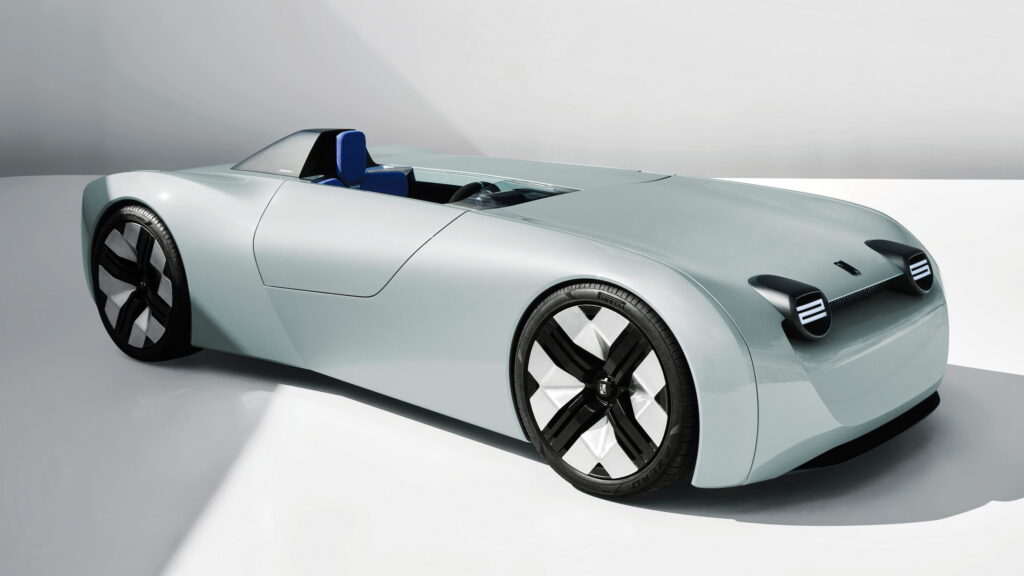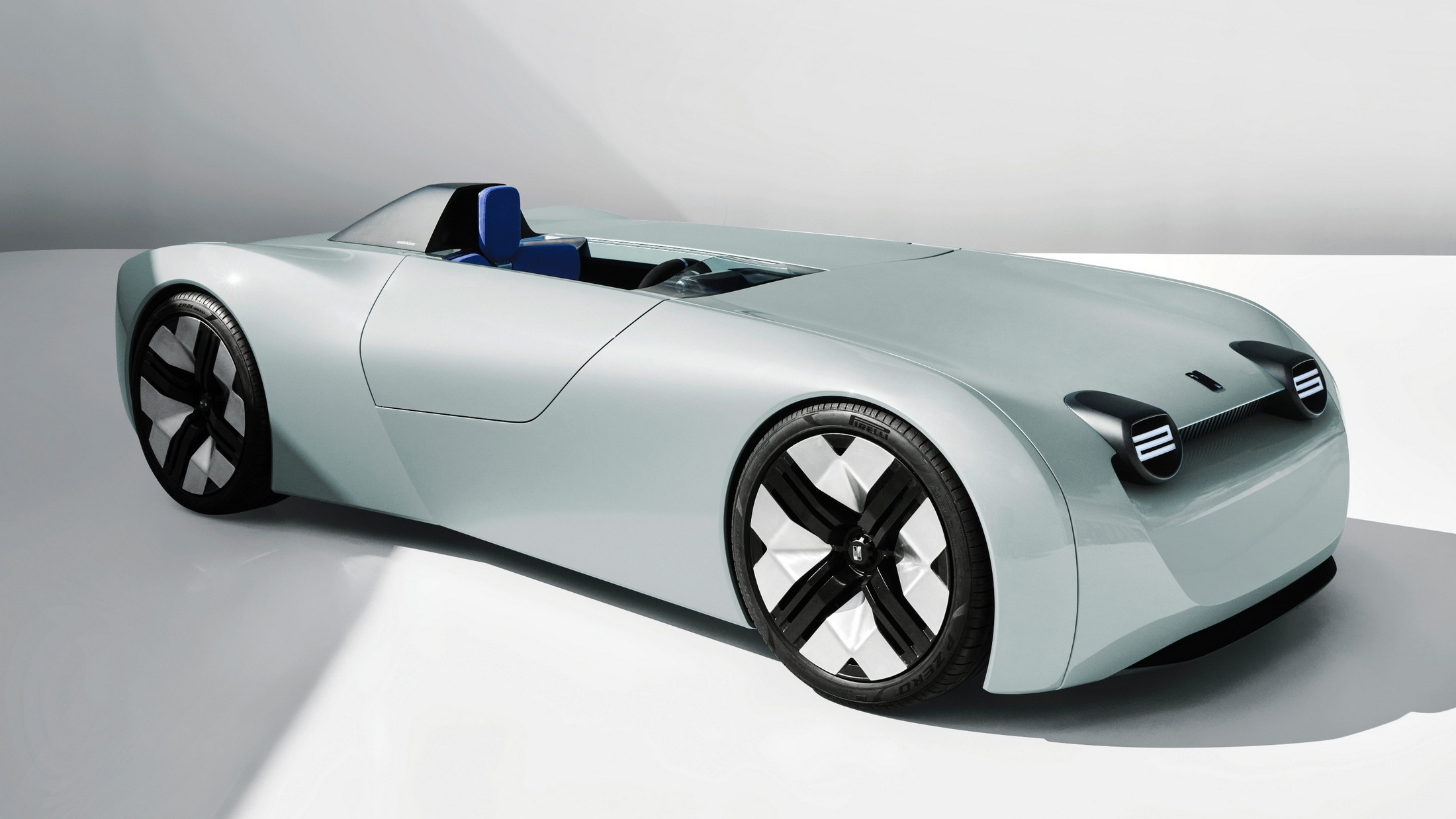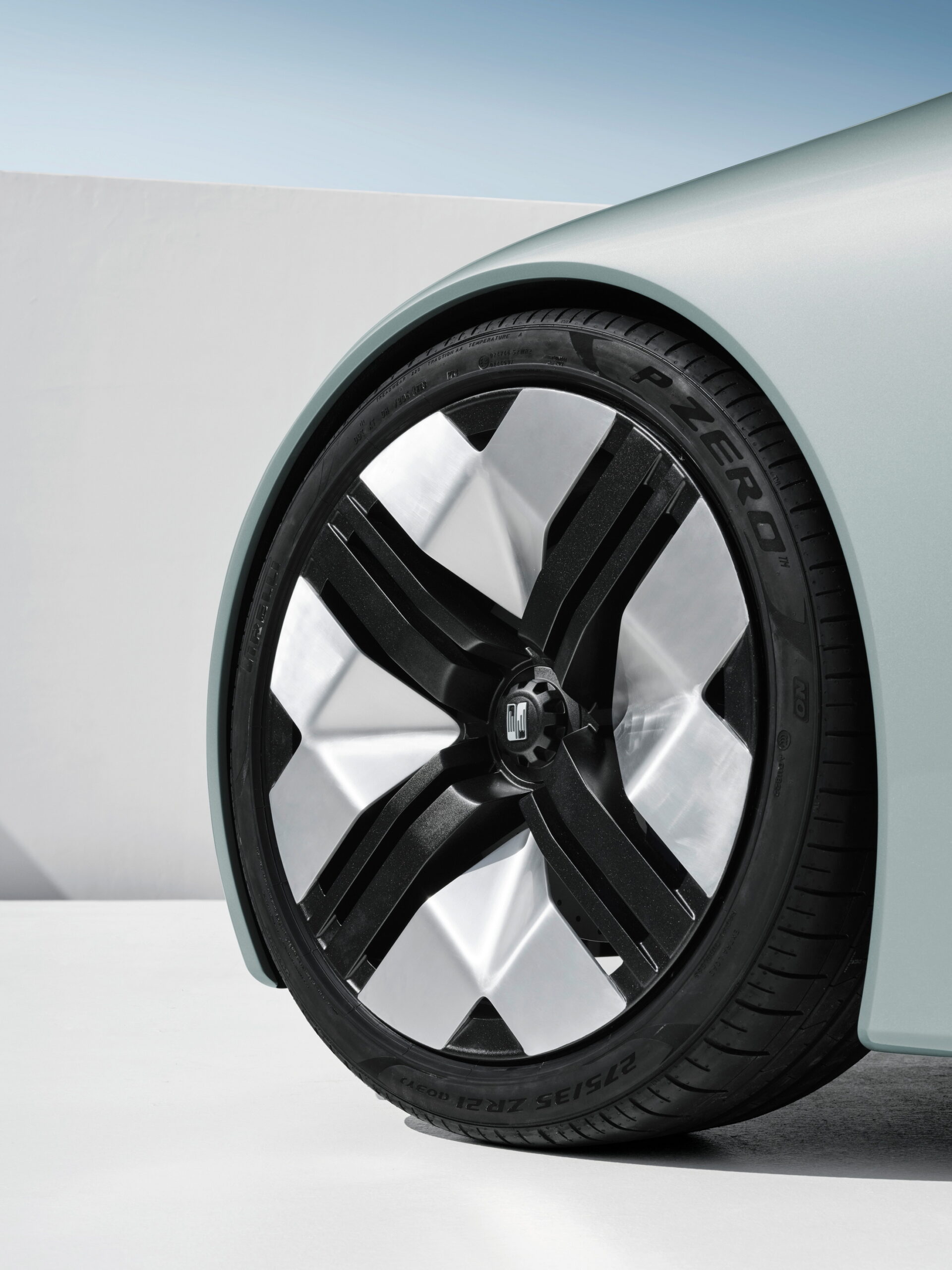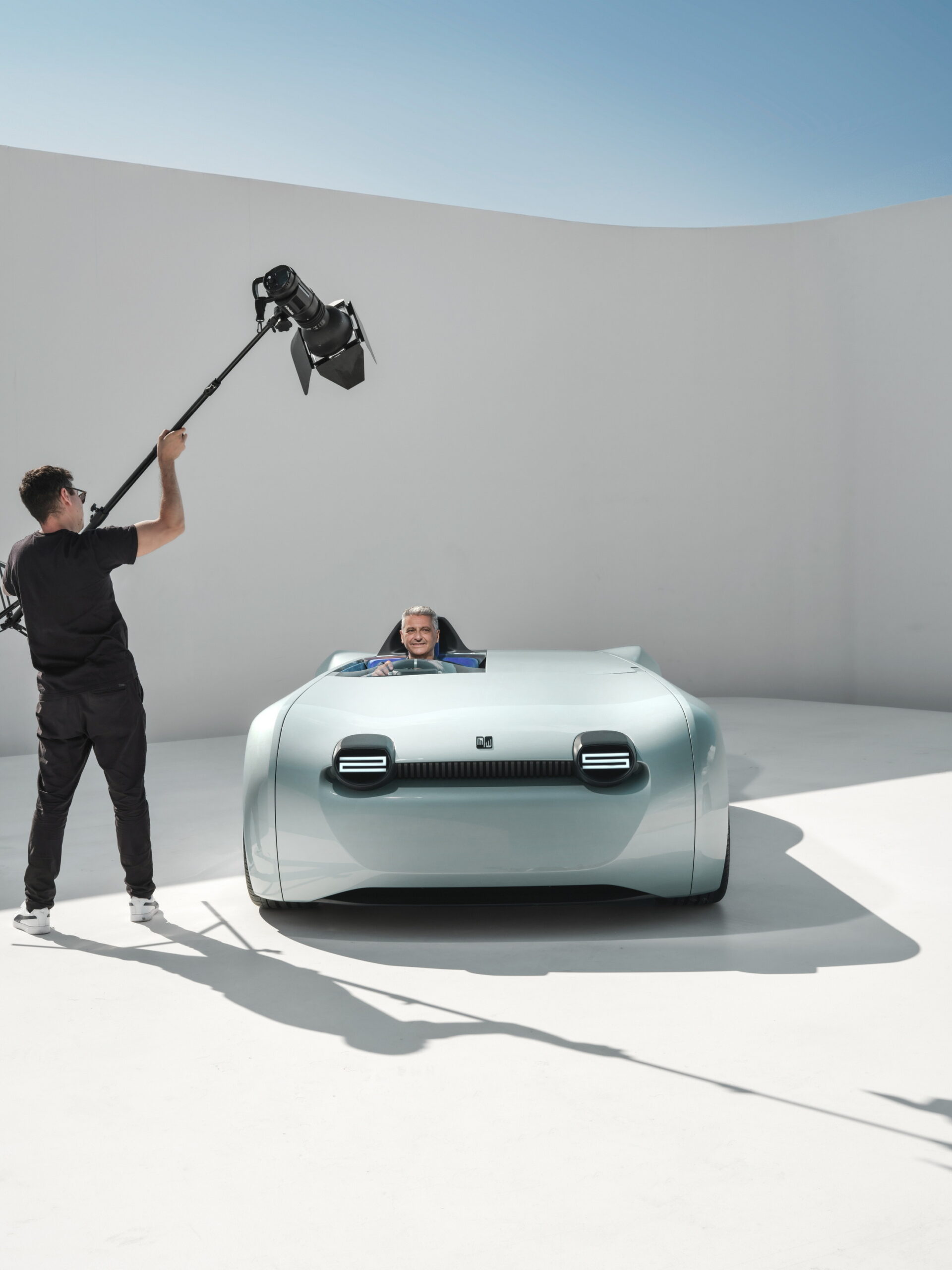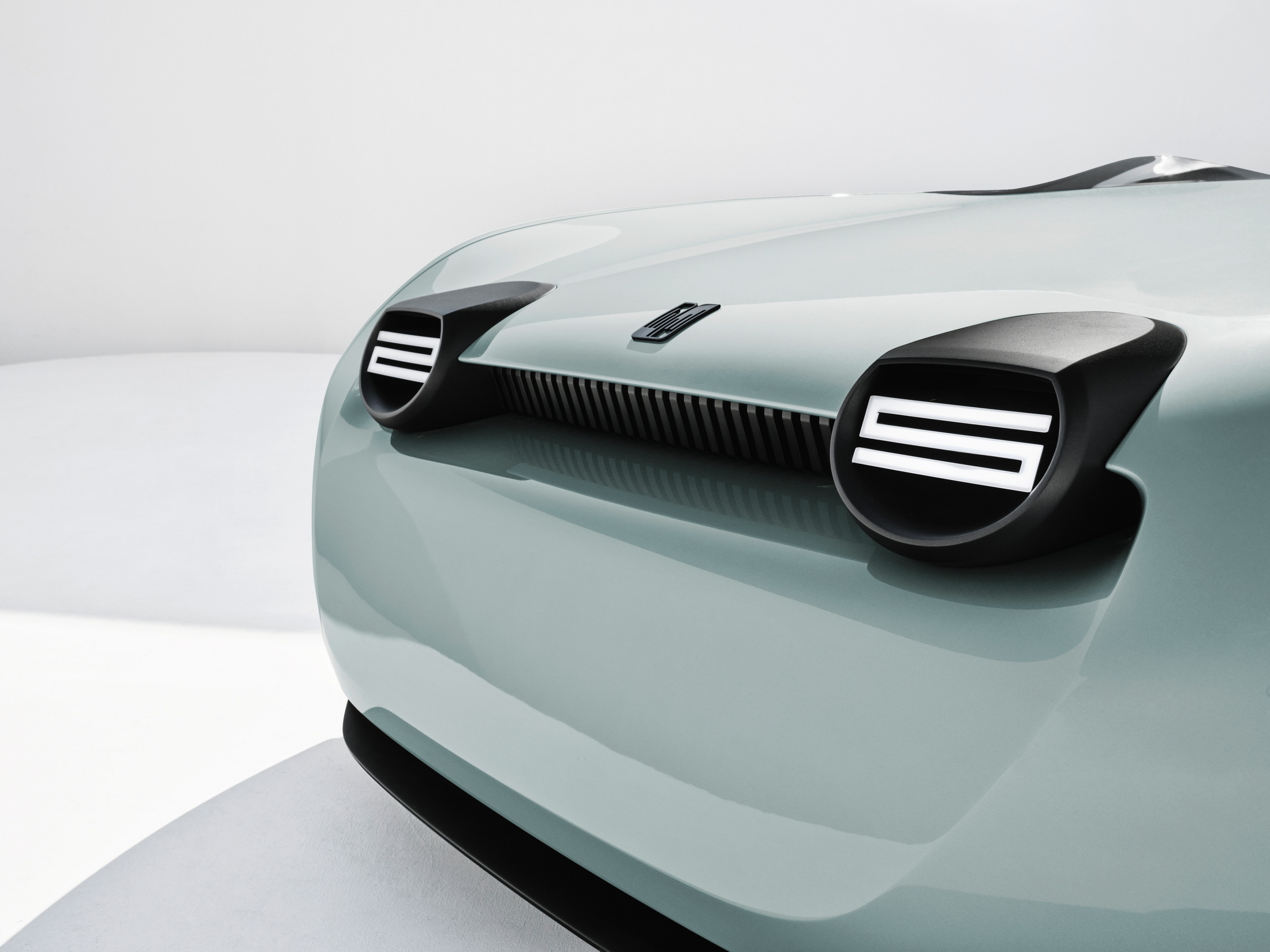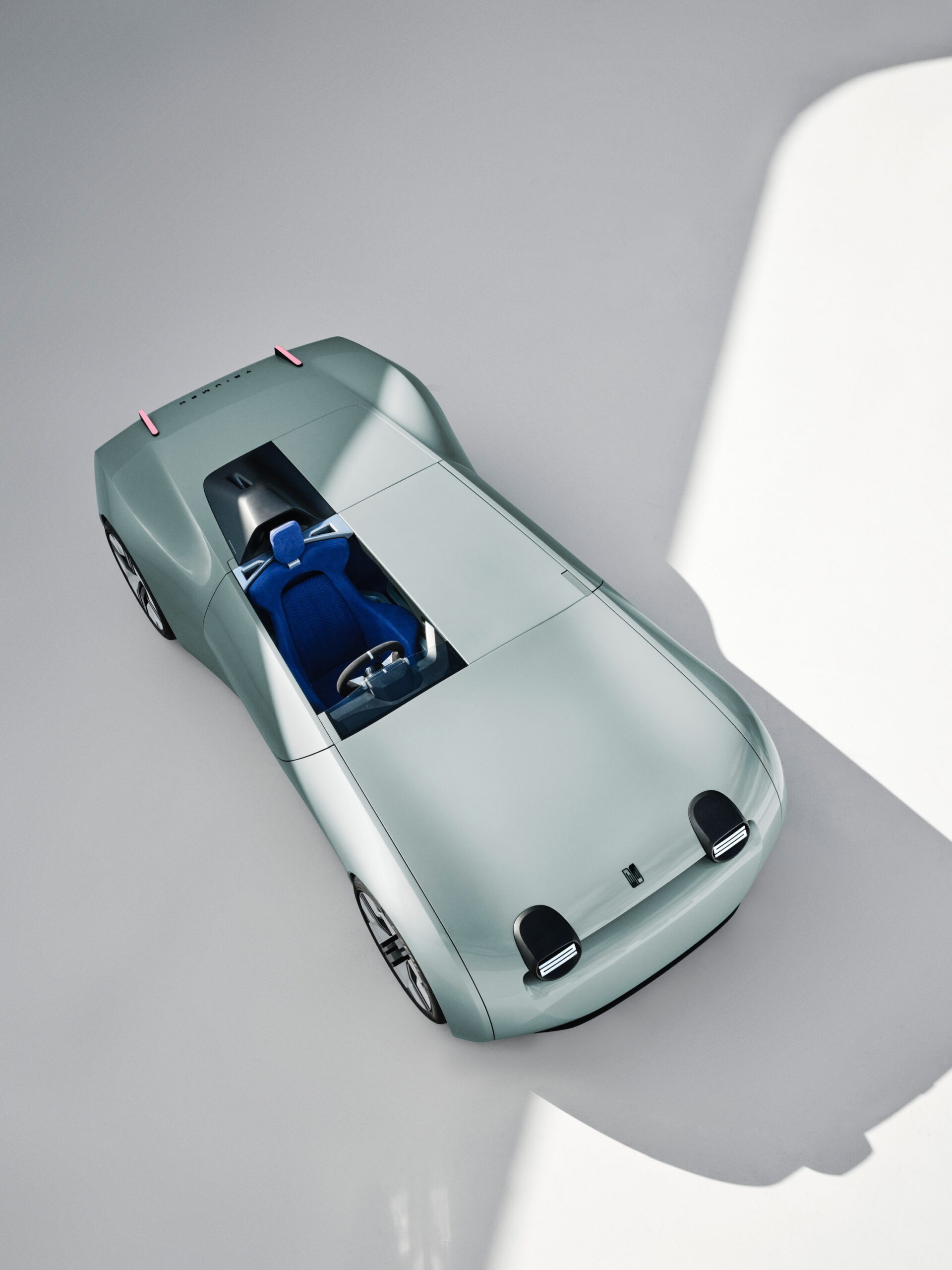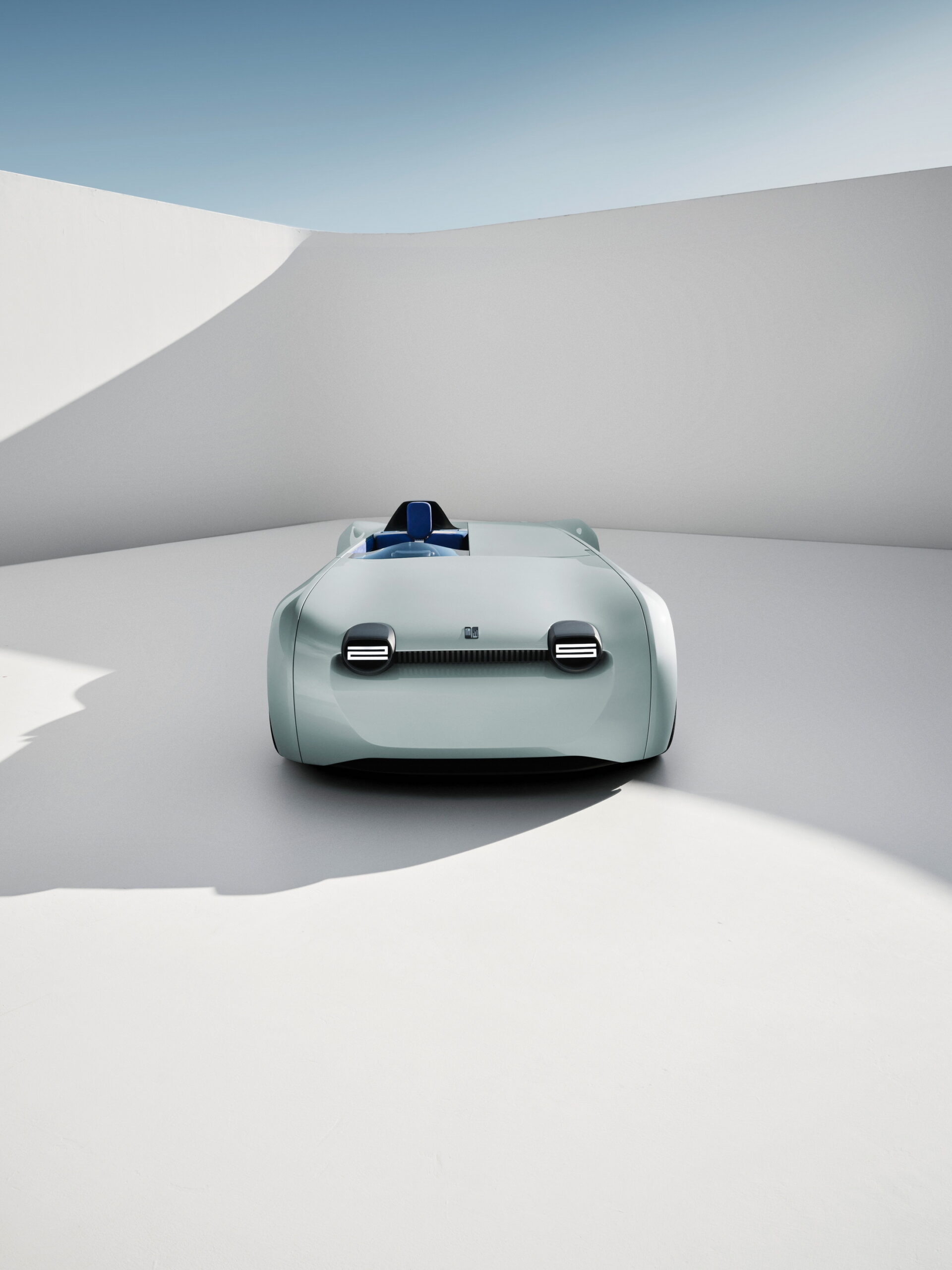Although you’re unlikely to have ever heard its name, Makkina has been designing cars for industry giants since 1998. To celebrate its 25th anniversary, it decided to create a one-off show car to make sure that you learn its name, and the result is the stunning Triumph TR25.
Built with permission from BMW, which now owns the Triumph name, the TR25 not only celebrates Makkina’s 25th anniversary, but also the English automaker’s 100th anniversary, making this a particularly historic project.
The TR25 is specifically a celebration of the Triumph TR2 that set a land speed record in Jabbeke, Belgium in 1953. The pre-production model managed reached a speed of 124.889 mph (200.989 km/h), a record for sub-2.0-liter cars that turns 70 this year—yet another anniversary to celebrate!
However, unlike the original, the new car gets an all-electric powertrain. Based on the platform from a BMW i3S, it lends the TR25 a low center of gravity and gives it nearly 50-50 weight distribution for superior handling dynamics.
Read: Audi Gives Classic NSU Prinz A Modern Electric Makeover With 240 HP
“Our aim was to update the true character of the original record-breaking ‘Jabbeke’ TR2 with our design, through both interior and exterior design,” said Michael Ani, the director of Makkina. “Using the BMW i3S platform allows us to create a blend of old and new with the TR2-inspired body shape and the versatile and adaptable powertrain, creating a seamless, fully electric experience.”
Although it is not identical to the TR2, the show car’s inspirations are clear to see. From the reinterpreted headlights that celebrate Makkina’s 25th anniversary, to the round front end, and the single-seat set-up, the TR25 pays homage to the record-breaker that came before it.
Although it has only one permanent seat, drivers can bring a passenger along with them by removing the tonneau cover and raising the jumper seat on the left side of the vehicle. Further identifying this as a driver-oriented car, the instrument cluster only shows speed and state of charge. Meanwhile, a second, self-leveling screen in the center of the steering wheel allows the driver to choose their driving mode.
Protecting the driver (but not the passenger) in the event of a rollover is a buttress behind their head that also conceals a rearview camera, and means that the TR25 doesn’t need any mirrors.
Under the hood, the BMW i3S’s powertrain remains largely unchanged. The TR25 still has 42.2 kWh of batteries (though they have been reconfigured), and its motor still makes 181 hp (135 kW/184 PS).
However, the new carbon fiber body reduces the vehicle’s overall weight by over 450 lbs (205 kg) allowing the TR25 to reach 62 mph (100 km/h) in just 5.2 seconds, which is 1.7 seconds faster than the i3S. A little embarrassingly, the TR25 can only reach a top speed of 115 mph (185 km/h), making it slower than the Jabbeke TR2, though we wager that it gets to its top speed a lot faster than the 70-year-old car.
More of a design showcase than a concept car, Makkina doesn’t mention how much it cost it to make the Triumph TR25, and there is no indication that it will build any more. But as a way to draw attention to the company that has been designing for 25 years, it’s a pretty effective tool.




